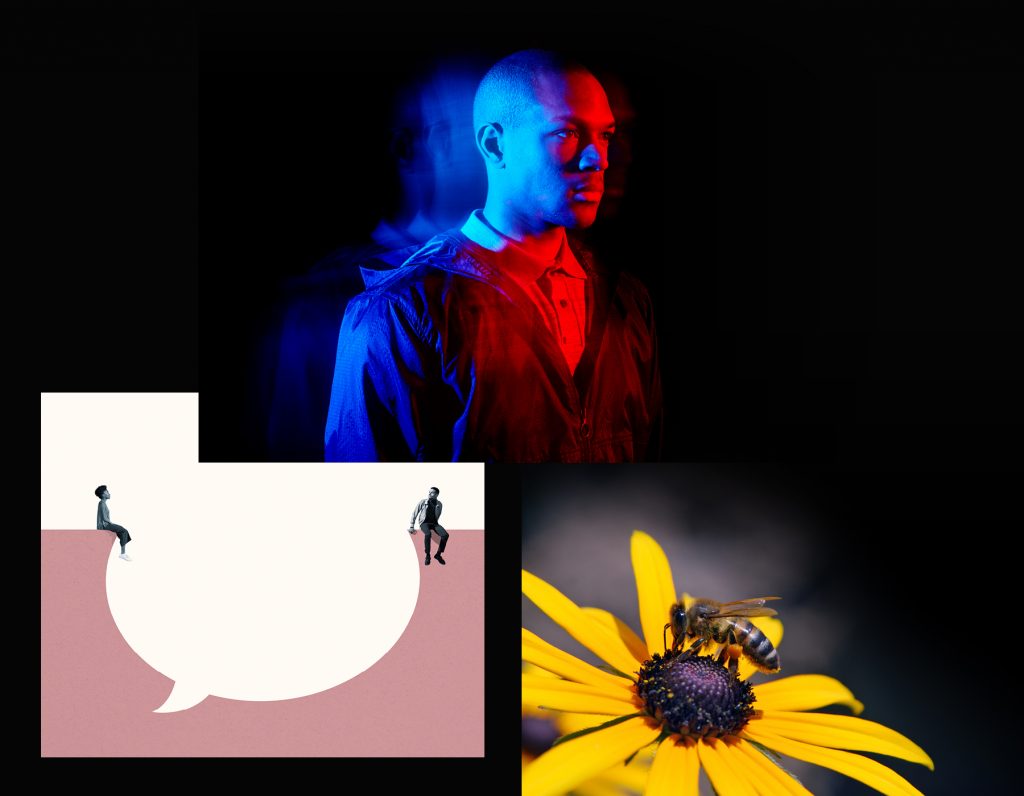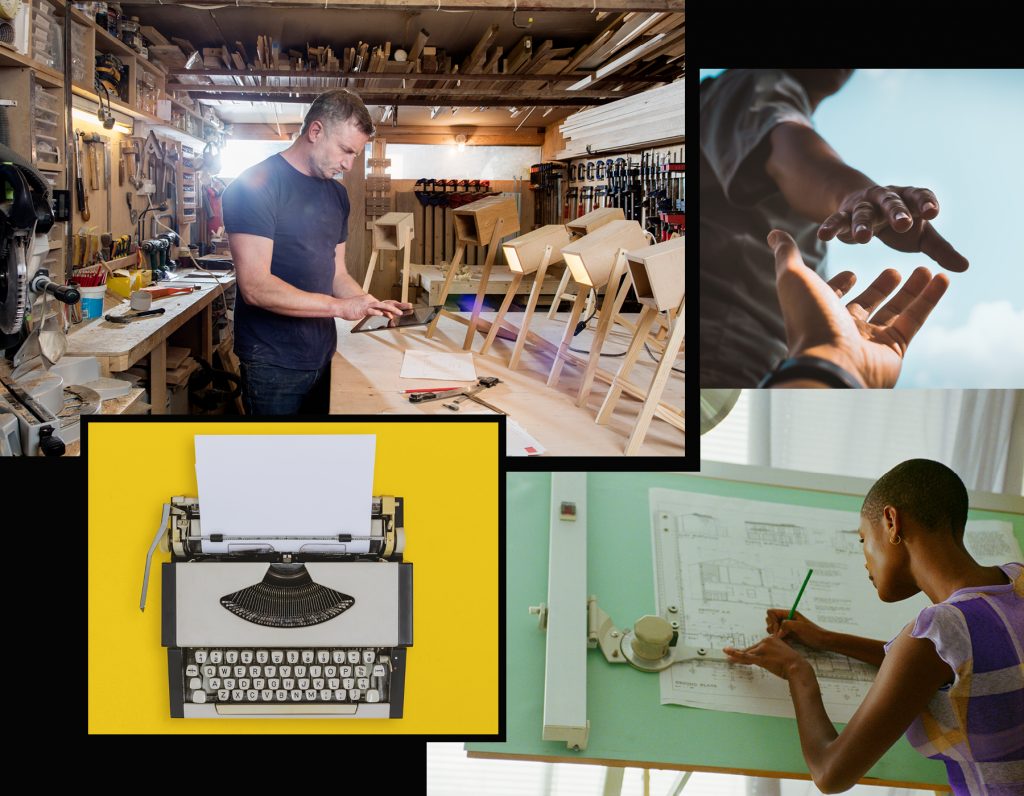Language
You can read the magazine in one of the following languages
Geolocation
You can read the global content or the content from your region

Innovation is the lifeblood of a company, but it takes consideration and effort to spark. It’s also not self-perpetuating – it always needs nurturing. But how can the people in your organization come together in the best possible way to facilitate this?
Tom Kelley from design and consulting firm IDEO believes it is best done by recognizing the 10 types of innovators and ensuring they are supported and able to use their skills readily. In his bestselling book, The Ten Faces of Innovation, he argues that we need teams that have people who can play each of these roles in order to thrive.
“Find new paths of learning with the Anthropologist, the Experimenter and the Cross-Pollinator. Organise for innovation with the Hurdler, the Collaborator and the Director. Ask the Set Designer to help build your stage and bring on the Experience Architect, the Caregiver and the Storyteller to wow your audience,” Kelley advises.
“Innovation doesn’t just turn organizations around. It becomes a way of life. It’s fun. It’s invigorating. It works. With all 10 personas on your side, you can drive creativity through your whole organization and build your own unique culture of innovation.”
It’s important to note these personas are fluid and not inherent personality traits that are permanently attached to only one member of the team – they are available to nearly anyone and people can switch roles, reflecting their multifaceted capabilities. “Innovation is ultimately a team sport,” he adds. “Get all the roles performing at the top of their game and you’ll generate a positive force for innovation.”

These outward-looking personas are just as important when you are at the top of your game as they prevent the business from becoming complacent and stagnant.
The Anthropologist: Curious about how humans interact emotionally and physically, Anthropologists are excellent at looking at problems in new ways and applying scientific methods to real life. They tend to be very open-minded, have deep empathy and intuition, notice small things others miss and often commit to memory innovative concepts, which could be useful in the future and problems which need solving. “Anthropologists embrace human behavior with all its surprises. They don’t judge, they observe. They empathize,” Kelley says. Talking to kids and getting them involved in your research can be a great way to get a fresh set of eyes that are more open to new ideas and perspectives.
The Experimenter: Careful risk-takers, Experimenters tend to love the process of testing and retesting potential scenarios to make ideas tangible. They aren’t put off by failures, they focus on celebrating the successes and building on them. Companies can support this process by creating an environment where it’s OK to fail. “Could you come up with a symbolic way of letting go of mistakes in your organization, or within your division or team?” Kelley asks. “It can’t hurt, and just might turn your team into winners.”
The Cross-Pollinator: These people often have a wide set of interests and are natural teachers with a love of learning – all great backgrounds which allow Cross-Pollinators to draw associations and connections between seemingly unrelated ideas or concepts to break new ground. Open-minded and not afraid to bring ideas and concepts from unrelated areas together, they are great at working around the constraints of their environment and bringing a fresh vision. Ensuring you have a diverse workforce will instantly bring more viewpoints and experiences to the table to support this work. Kelley also suggests regular guest speakers, who can bring new ideas into what can become a stagnant environment, will help enthuse and promote fresh thinking.

While working within the practical confines of resources and budget, organizing personas will work out where and when to prioritize and make great ideas a reality.
The Hurdler: They love solving new problems and even better, Hurdlers have the tenacity and resilience to keep trying. Their positive determination can help new ideas become the norm and even turn setbacks into successes. Hurdlers are good in a crisis and thrive on competition, Kelley says. “Their drive plays a major part in significant new innovations and can turn an organization’s greatest challenge into its greatest success.” It’s important to make sure you have a culture of listening and not to take offense if the status quo is being challenged.
The Collaborator: Going one step further than just being a team player, Collaborators will bring out the best in members of the team and make even the most private member open up, meaning traditional boundaries are dissolved and the opportunities for team members to assume new roles are created. More of a coach than a boss, these personas will ensure a team has the skills and confidence to complete their task successfully. Help support and encourage collaboration by bringing teams who rarely need to interact together for social events and team-building days. Also consider the layout of the business; can you move departments and occupy an open-plan space so there is more chance for interaction? If you have bigger teams, perhaps breaking them into smaller groups would give members a chance to exchange ideas.
The Director: These personas can stand back and see the bigger picture and how it fits into their organization. Good Directors have a contagious enthusiasm and can bring out the best in their team. A particularly important tool for a Director is the brainstorming session, and Kelley suggests you make the most of these by pumping up the energy levels. Try scheduling them for paydays when people are in a better mood, use lots of bright Post-it Notes and markers, and ensure there are good-quality refreshments at hand – it will make them feel appreciated and want to stay. Providing an outline of the objectives before the occasion will mean you can jump right into the session. “Regular brainstorming is as critical to an organization as regular exercise is to your health,” Kelley asserts.

These personas take the new knowledge from the learning roles and the application of the organization roles in order to make innovation happen.
The Experience Architect: This is the experience maker, who ensures that anyone interacting with the products and spaces of your business, either through digital or real life, has a wonderful time. These are the people who turn the ordinary into something special, wherever they are in your company. “A good Experience Architect sets the stage for positive encounters with your organization through products, services, digital interactions … Their experiences stand out from the crowd,” Kelley explains. “They keep you from being relegated to the commodity world, where price is the only point of comparison.”
The Set Designer: Your workspace is always at its most inspiring and motivational with the Set Designer around. They will help ensure the environment stimulates creativity, allows for individual expression and is constantly shifted as required. Kelley observes that providing the set for innovation to take place is an important aspect of your organizational space, so think about including brainstorming and project rooms, thought-provoking corridor art, and places for relaxed conversation and spontaneous interaction.
The Storyteller: Able to capture imaginations with their communication skills in various mediums: oral, video, written or animation. The Storyteller’s ability to anchor a message in authenticity means they can spark emotion, communicate values and objectives, foster collaboration and ultimately lead people and organizations into the future. Storytelling is a fundamentally human way of conveying information for the teller and the listener, and you can support this by thinking about the way you interact with your customers and asking for experience stories when doing research rather than favouring multiple-choice surveys.
The Caregiver: Never has the human-centred experience been more important than now, which is why Caregivers and their innate empathy are so important. They bring a certain comfort and intimacy, which encourages customers to build a relationship with your company. Kelley suggests that sometimes low-tech can be the answer and we should consider leaving what’s best done by humans to humans. “Everyone thinks innovation is expensive, but how much does a smile cost?”